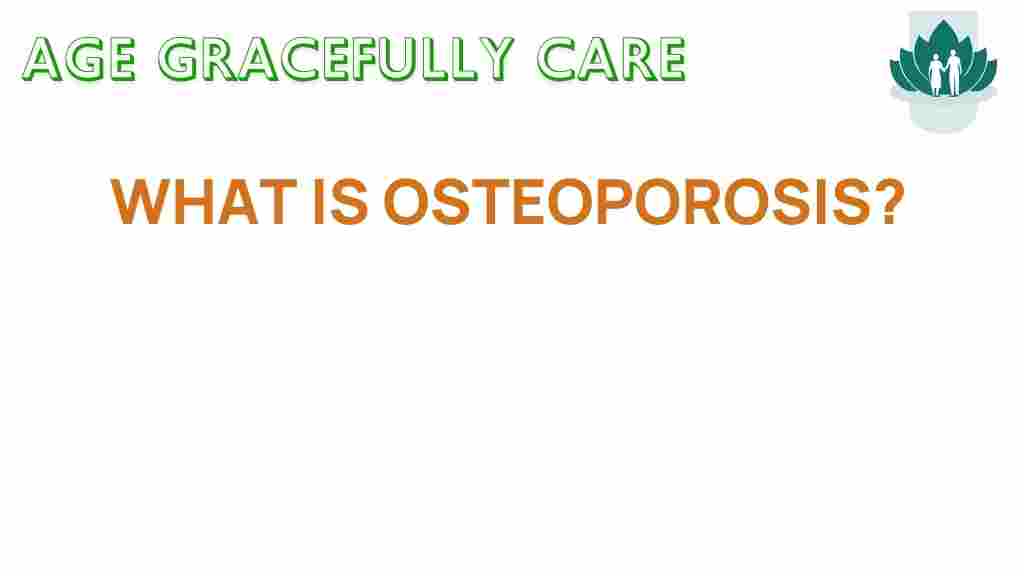Unraveling Osteoporosis: The Silent Epidemic Impacting Millions
Osteoporosis has been dubbed a silent epidemic, affecting millions worldwide yet often going unnoticed until a fracture occurs. This condition significantly impacts bone health, leading to increased fragility and susceptibility to breaks. In this comprehensive article, we will explore the intricacies of osteoporosis, focusing on its risk factors, prevention strategies, treatment options, and the importance of awareness. By understanding the role of aging, nutrition, and lifestyle, we can take proactive steps toward maintaining strong bones.
Understanding Osteoporosis
Osteoporosis is a bone disease characterized by the deterioration of bone tissue and a decrease in bone density. This results in bones becoming weak and porous, making them more prone to fractures. It affects both men and women, but women, especially postmenopausal, are at a higher risk due to hormonal changes that affect bone density.
Risk Factors for Osteoporosis
Several factors can increase the likelihood of developing osteoporosis. Understanding these risk factors is crucial for prevention and early intervention. The key risk factors include:
- Aging: Bone density naturally declines with age, particularly after the age of 30.
- Gender: Women are at a greater risk, especially those who are postmenopausal.
- Family History: A family history of osteoporosis can increase your risk.
- Body Frame Size: Smaller body frames tend to have a higher risk due to less bone mass.
- Hormonal Levels: Low estrogen levels in women and low testosterone levels in men can contribute to bone loss.
- Dietary Factors: A diet low in calcium and vitamin D can negatively impact bone health.
- Lifestyle Choices: Sedentary lifestyle, smoking, and excessive alcohol consumption can weaken bones.
Prevention of Osteoporosis
Preventing osteoporosis involves a multifaceted approach that includes dietary changes, lifestyle modifications, and regular health screenings. Here’s a step-by-step guide to help you strengthen your bones:
Step 1: Nutrition for Bone Health
Nutrition plays a vital role in maintaining bone health. Key nutrients include:
- Calcium: Essential for building and maintaining strong bones. Aim for 1,000 mg per day for most adults, increasing to 1,200 mg for women over 50 and men over 70.
- Vitamin D: Crucial for calcium absorption. Get sunlight exposure and consider supplements if necessary, aiming for 600-800 IU per day.
- Protein: Important for bone structure. Include lean meats, dairy, legumes, and nuts in your diet.
- Fruits and Vegetables: They provide essential vitamins and minerals that support bone health.
Step 2: Regular Exercise
Physical activity is vital for maintaining bone density. Incorporate the following types of exercises:
- Weight-Bearing Exercises: Activities like walking, jogging, and dancing help stimulate bone formation.
- Resistance Training: Lifting weights or using resistance bands can strengthen muscles and bones.
- Balance and Flexibility Exercises: Yoga and tai chi can improve balance and reduce the risk of falls.
Step 3: Lifestyle Modifications
Making healthy lifestyle choices can significantly reduce your risk of osteoporosis:
- Avoid Smoking: Smoking is detrimental to bone health and can accelerate bone density loss.
- Limit Alcohol Consumption: Excessive drinking can interfere with calcium balance and bone health.
- Maintain a Healthy Weight: Being underweight increases the risk of osteoporosis, while being overweight can increase the risk of fractures.
Step 4: Regular Health Check-Ups
Regular screenings can help detect osteoporosis early. Discuss bone density testing with your healthcare provider, especially if you have risk factors. The National Osteoporosis Foundation provides resources and guidelines on when to get tested.
Treatment Options for Osteoporosis
If diagnosed with osteoporosis, treatment options are available to help manage the condition and prevent fractures. Common treatments include:
- Medications: Bisphosphonates, hormone therapy, and other medications can help strengthen bones and reduce the risk of fractures.
- Calcium and Vitamin D Supplements: Increasing intake of these nutrients can support bone health.
- Physical Therapy: A physical therapist can design a program tailored to your needs, focusing on strength and balance.
- Fall Prevention Strategies: Implementing safety measures at home can reduce the risk of falls that lead to fractures.
Raising Awareness About Osteoporosis
Awareness is key in combating osteoporosis. Many people are unaware they are at risk until it’s too late. Here are ways to raise awareness:
- Educational Programs: Participate in or organize programs that educate people about osteoporosis and its prevention.
- Community Events: Engage in community health fairs or events focused on bone health.
- Social Media Campaigns: Use platforms like Facebook and Instagram to share information and resources about osteoporosis.
Conclusion
Osteoporosis is a significant public health concern that often goes unnoticed until a serious fracture occurs. By understanding the risk factors and implementing prevention strategies, including proper nutrition and healthy lifestyle choices, we can protect our bone health as we age. Regular check-ups and awareness initiatives are crucial in combating this silent epidemic. Remember, it’s never too early or too late to take action towards better bone health. For more information on osteoporosis and resources for prevention and treatment, visit the Osteoporosis Foundation.
Taking charge of your health today will pave the way for a healthier, more active tomorrow. Let’s work together to unravel osteoporosis and promote strong bones for all!
This article is in the category Health and created by AgeGracefullyCare Team
